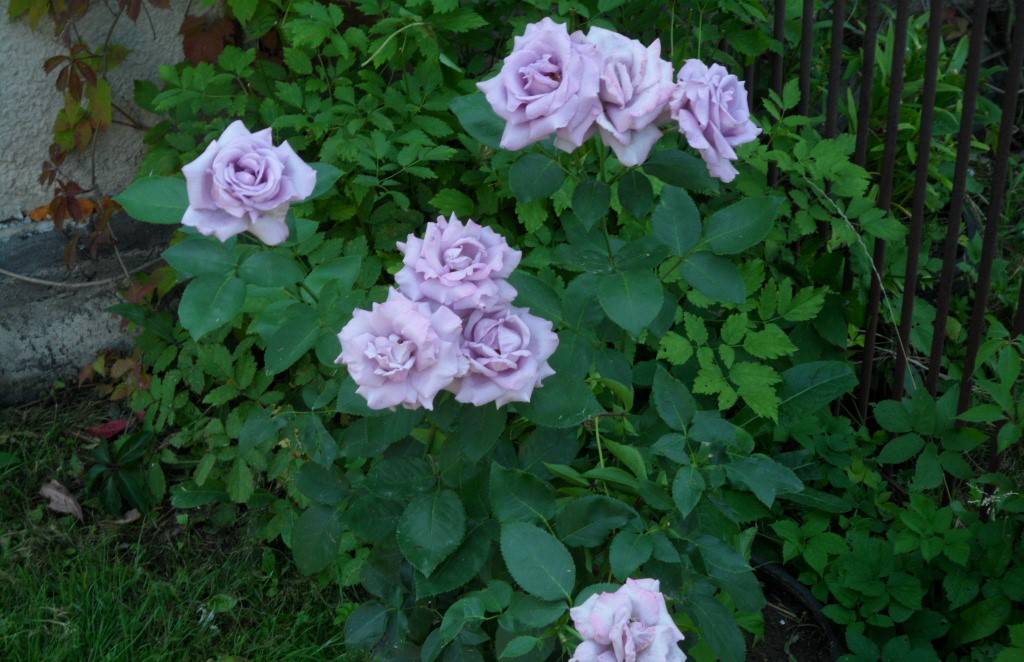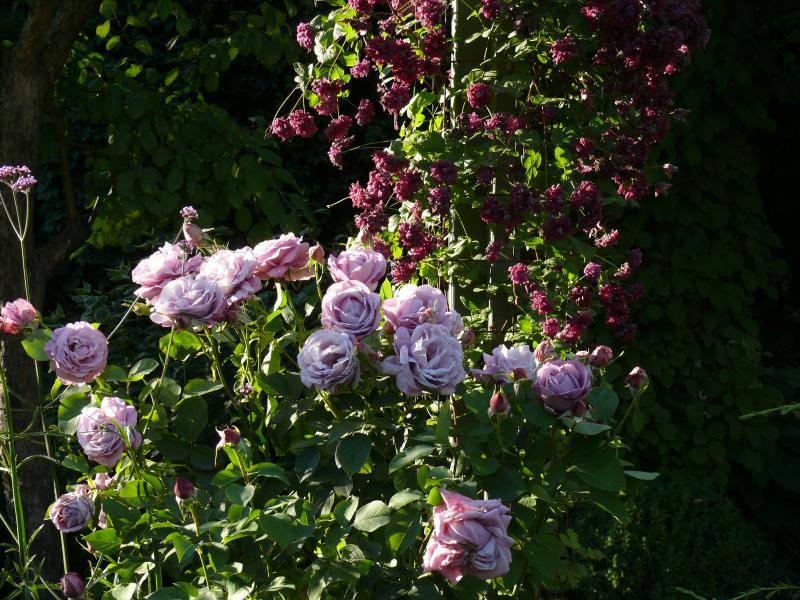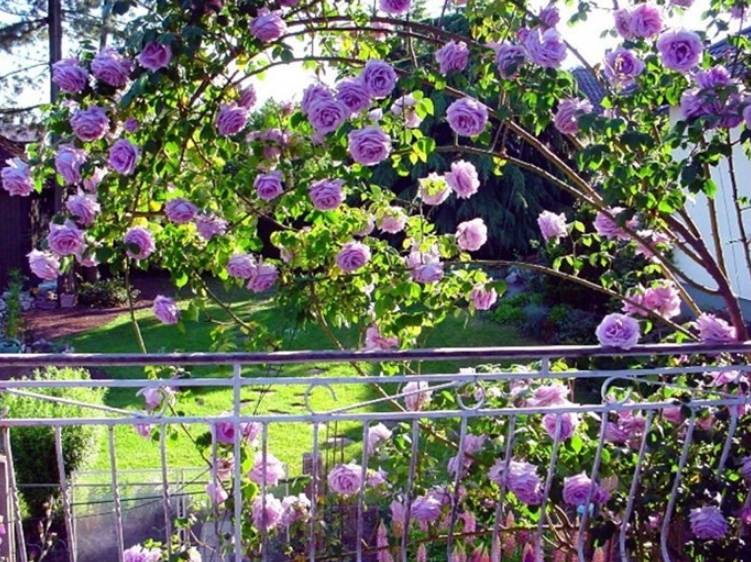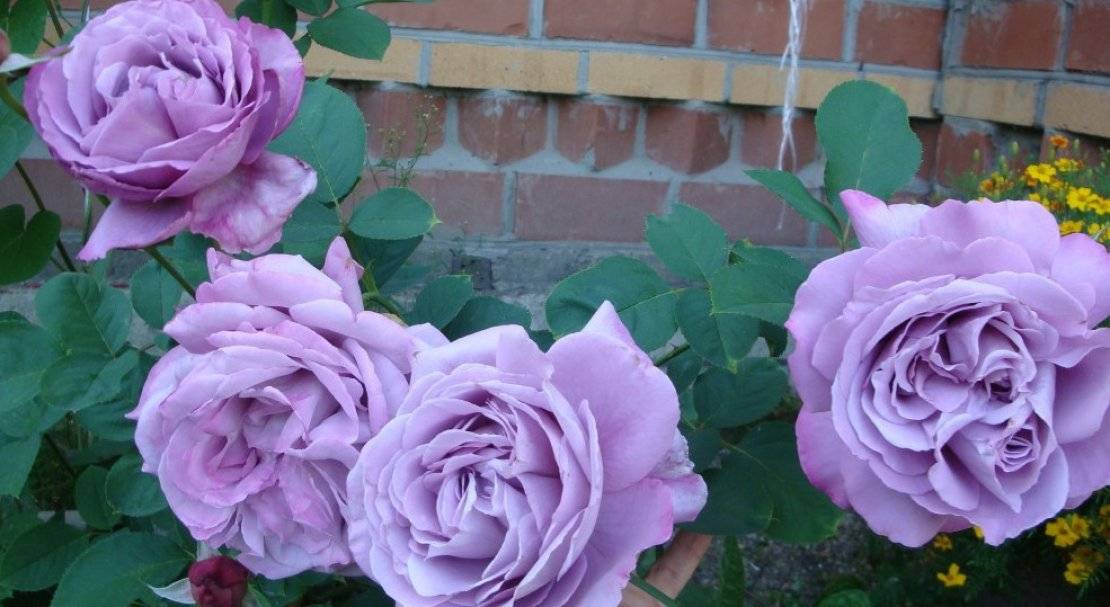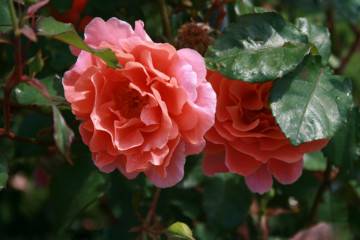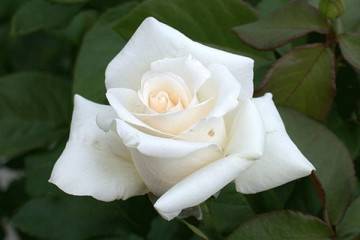Rose of Indigoletta (Indigoletta)
Content:
There are no better or worse varieties among roses, but there are extraordinary ones. One of these is the Indigoletta rose. Its attractiveness lies in the color of the flowers. They are of an unusual lilac-pink color.
Description of the variety, history of creation
The variety appeared in 1981 in the Netherlands. It was brought out by the famous scientist Van de Laak. The official name is Azubis. Florists call the rose the Blue Lady, the Blue Queen.
Description of the rose begins with the color of the buds. It is truly royal - deep purple. In shape, the buds resemble an elegant glass. Double flowers contain 22-30 purple petals. When they fade in the sun, they become the colors of wild lilacs. The diameter of the flowers is 8-10 cm. Collected in a brush, 2-3 pieces on one peduncle.
Abundant flowering, twice a season, with a short dormant period. The first wave is May-June, the second is August-September, and then until the first frost.
Rose belongs to climbing varieties. The bush is powerful, vigorous. The branches are thick, resilient, grow up to 3-4 m. The width of the bush is 1.5 m. The leaves are dense, dark green, glossy.
Advantages and disadvantages of the variety
Before planting a climbing rose Indigoletta in the garden, assess its advantages and disadvantages.
Main advantages:
- unusual color of flowers;
- thick double brushes;
- high decorative properties;
- pleasant aroma;
- resistance to rain;
- the bush grows rapidly;
- re-flowering.
Dutch varieties, which include Indigoletta, tolerate winters well in central Russia. This is their main advantage.
But there are also disadvantages:
- Shoots do not bend well, so it is difficult to cover the rose in winter.
- The plant requires a lot of light.
- Flowers fade under the sun.
There are few shortcomings, so Indigoletta is purchased for decorating the local area.
Use in landscape design
The rose is used in landscaping gardens and parks. Trellises, gazebos and pergolas are wrapped around it. They decorate columns, walls, fences. A tall plant is used as an accent on a spacious meadow, an emerald lawn. Planted on slopes, bends of paths.
In large areas, Indigoletta is planted in the company of standard copies. Three undersized bushes are planted to one climbing rose.
Growing a flower
It is not difficult to grow a beautiful rose on the site. All that is needed is serious informational preparation. They start with seedlings.
Saplings
They are purchased in the stores of the agricultural complex from a trusted manufacturer. In nurseries, they are grown with closed (CCS) and open (CCS) root systems.
ZKS seedlings in nurseries are grown in containers or tubes. They are found in moist soil, which makes it difficult to determine the condition of the roots. Therefore, they look at the shoots. They should be healthy, green or brown in color. The shoots should have buds or young leaves.
Such seedlings are taken to plant a rose at any time: in spring, summer or before winter. The plant does not suffer, since it is planted by transferring it directly into the ground at the designated place.
If the seedlings are OKS, examine the roots. Take well-developed, rot-free. Pruned, planted immediately. The right time is spring and before winter. In the fall, you need to plant long before frost, so that the plant has time to take root. In winter, the seedling is covered.
Rose planting site
When choosing a place for planting an Indigoletta rose, take into account the following points:
- The flower loves the sun, so they choose a bright area. In the shade, a rose will not show all its beauty. In addition, diseases develop in shaded areas.
- The sun should prevail on the east side so that the dew dries quickly in the morning. This will keep the culture free from fungi.
- The roots of roses are afraid of getting wet, so the melt water on the site should not linger.
- The groundwater should be low enough so that the roots do not suffer.
- The planting site provides good drainage.
Roses are afraid of through winds, therefore, ideally, there should be a house wall or a solid fence on the south side of the planting. Flowers grow better on a hillock, because cold air does not stagnate there.
The soil
Favorable soil for culture is light loam with humus. They are permeable to air and moisture. But they are rare.
Sandy and sandy loam freezes in winter, overheats in summer. They add manure, peat, turf soil. They enrich poor soils. Heavy clay soils sod, add sand, compost. Peat also improves them. The acidity is preferably low, pH 6.0-6.5.
Planting a rose
When the seedlings are purchased, the place is chosen, they start planting:
- The roots of the seedlings are dipped in a clay mash with fertilizer. For this, 3 tablets of phosphorobacterin are dissolved in water, added to the chatterbox.
- They dig a hole 60x40 cm. They fill in the drainage, on top of it humus or compost. Add a glass of ash.
- A mound of fertile land is poured.
- The plant is placed in the center, the roots are spread over the mound.
- Fall asleep with earth, deepen the root collar by 8-10 cm.
- The earth is being compacted.
- Watered with that growth stimulant in which the roots were soaked.
Indigoletta rose care
After planting, a complex of agrotechnical measures begins.
Watering
Young bushes are watered abundantly for 1 month, 1-2 times a week. In dry time - 3 times. A bucket of water is poured under the bush. It is not worth pouring over - the roots will rot.
Weeding
After watering and rains, when the topsoil dries out, the soil under the bush is loosened. This increases the air flow to the roots, improves moisture permeability.
Top dressing
When the roots have strengthened, fertilize with a weak mullein solution. In summer, the indigoletta rose needs potash and phosphorus fertilizers. Ash is introduced into the trunk circle. During flowering, the crop is not fertilized. Immediately after it, the depleted plant is again stimulated to flower buds with a potassium-phosphorus complex.
Support
It is customary to grow climbing roses on trellises. In the case of Indigoletta, this is not a prerequisite. A powerful bush can do without stands. But when the plant is tied up, they give a great decorative effect to the area. The fan-shaped method gives the bush more air, provides better ventilation. Culture quickly outgrows support. The whips are heavy, so metal prefabricated structures are chosen. They are built up when the branches outgrow the support.
Pruning, transplanting
Garden rose climbing Climing Indigoletta is genetically predisposed to self-rejuvenation. Young shoots replace old ones. Gardeners prune them in time.
Indigolettes are not pruned to stimulate flowering. Other tasks:
- Create a base skeleton.
- Stimulates the growth of replacing vegetative shoots.
- Withered, damaged, diseased branches are removed.
General pruning rules:
- The instrument must be clean and sharp.
- The branches are cut at 45 °, the cut goes down from the bud so that the water does not flow onto it.
- The cut is made 8-10 mm higher than the external productive bud.
- The cut site is treated with garden pitch.
The procedure is carried out 3 times:
- Spring pruning. The winter shelter is being removed. Before bud break, unproductive (diseased, thin, dry) shoots are removed. Weak ones are cut at the root, damaged ones - to the healthy part, the tops - to the first bud.
- Summer pruning. Controls flowering. The quality of flowering of the next wave depends on it. Cut off the faded parts to the first from the top of the leaf. Without this procedure, the second wave is delayed, and next year the flowering will be scarce. Lateral branches are cut to 2-3 buds.
- Autumn pruning. This is preparation for winter. Sick and damaged branches are removed.
When the garden plot is replanted, the rose is transplanted. In the spring, the bush is cut in half. The plant is dug out, keeping an earthen lump. The roots are pruned, the diseased are removed. The process is comparable to landing.
Flower propagation
A simple and effective way to propagate a climbing rose is by cuttings.
The stalk is cut from a semi-lignified branch of a one-year-old shoot. Take the middle part. The thickness of the handle is 5 mm. It has 2 buds and the same number of leaves. The upper cut is made obliquely above the kidney by 2 cm, the lower one is right under the kidney. It is soaked in Kornevin, planted in the substrate at an angle.
Rooted cuttings are planted in a mini greenhouse. In greenhouse conditions, you need to take care of the seedling until next spring.
Diseases and pests
Climbing varieties are annoyed by the same diseases as standard species:
- Powdery mildew - an excess of moisture and nitrogenous fertilizers. All damaged shoots are removed in autumn. In the spring, dormant buds are sprayed with iron vitriol.
- Bacterial cancer - growths on roots and stems. They grow, darken, decompose. The plant cannot be saved. Before planting, examine the roots. The thickenings are cut off, the place is treated with copper sulfate.
- Black spot - black and brown spots on the upper side of the leaves. They are cut off, burned. In the spring, they are sprayed with Bordeaux liquid.
- Gray rot - stems and leaves rot. The plant is treated with Bordeaux liquid.
The climbing rose Indigoletta is a garden decoration. Planting and leaving doesn't take long. It is planted more often in spring with seedlings. The place is chosen bright, ventilated. Watered moderately, cover for the winter if the frost is below 30 ° C. Transplanted in the spring, while the soil is selected fertile, light. Fertilize after wintering with nitrogenous compounds, in the summer with potassium-phosphorus dressings. Monitor health and pests.
